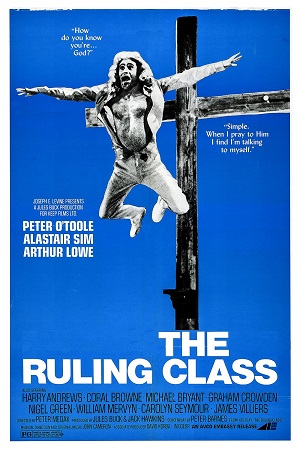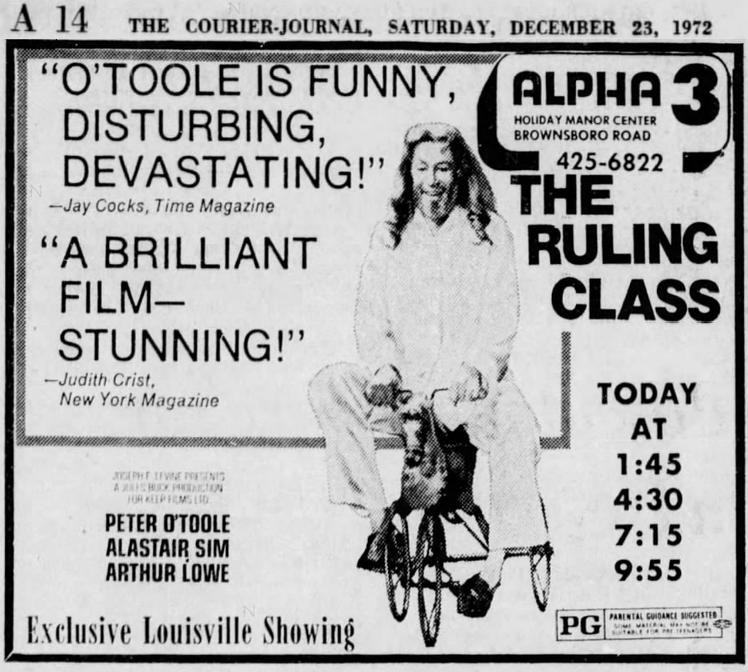Chapter 23
The Ruling Class
The Ruling Class
Double-billed with What’s New, Pussycat? was an extraordinary film called The Ruling Class.
That deserves a discussion.
I think it was Steven Scheuer’s Movies on TV book that mentioned that this
123-minute movie was originally 154 minutes.
Okay. Understood.
Yet I only recently discovered bits and pieces of the story, and so now I’m terribly confused.
Peter O’Toole purchased the rights for his production company, Keep Films,
and he and his coproducers, Jules Buck and Jack Hawkins, raised funds by preselling distribution rights to United Artists.
Playwright Peter Barnes expanded his stage play by about 30 minutes, and the film ended up as 154 minutes plus an intermission.
The British censor deleted part or all of the lab-rats sequence.
The Pittsburgh Press
of Wednesday, 22 November 1972, p. 20, claimed that
“when United Artists asked O’Toole
to shorten the two-hour 30-minute
film, he took it to Avco-Embassy Pictures
instead. Avco, which ironically had
sued him a couple of years ago for his
alleged shenanigans on the set of their
‘Lion in Winter,’ agreed to release it
with only about three seconds cut (a
brief nude bit).”
(Avco Embassy, by the way, also chopped out the intermission, preferring a continuous film.)
Contradicting that, the review in
The Louisville Courier-Journal of Saturday, 23 December 1972, p. A 14, states that the PG rating might be controversial,
since the film included flashes [sic] of nudity (actually a single three-second flash), though no “undue violence.”
Similarly, the
Philadelphia Daily News mentioned “only small amounts of nudity and cursing,” and it summarized the rat scene.
The Lowell Sun, Tuesday, 17 October 1972, p. 30,
claimed that the film was over two and a half hours,
shorter than the three-hour version the critic claimed to have seen in London.
I suspect the critic was hallucinating.
More curiously,
The Vancouver Sun, Wednesday, 8 November 1972, p. 37,
declared, “The Ruling Class, as shown at Cannes,
was an awkward, over-long film that
Hungarian-born director Peter Medak
did not control. As seen at The Fine
Arts Cinema now, it still is. It’s more
than 2½ hours long, cut from four.”
(I cannot imagine even the roughest of rough cuts being four hours.
A preliminary assembly maybe, but a preliminary assembly would not have been screened at Cannes.
Actually, according to Derek Malcolm in
The Guardian of Thursday, 25 May 1972, p. 12,
the print shown at Cannes was 156 minutes.
If that claim is accurate, then either the projectors were running a bit slowly
or the film was not quite in its final shape.)
Another report claims that the US version was trimmed to
148 minutes.
Confirming this is
The Manhattan [Kansas] Mercury of Sunday, 11 March 1973, p. A6,
which makes note of “The very long movie (nearly two hours and a half).”
The Baltimore Evening Sun of Thursday, 11 January 1973,
makes a different claim:
“far too long on the screen (121 minutes)....”
My best guess is that several versions were issued in the US in 1972/1973.
The initial release was probably only five or ten prints, which went to the big cities, and that was the full version.
After getting audience and critical reactions, Avco Embassy probably altered the film slightly
for the next batch of prints, which were sent to the next-biggest cities.
After more audience reactions and critical drubbings poured in,
Avco Embassy seems to have chopped the film even more brutally for the third-tier cities and subrun markets.
Just a guess.
The first VHS release was about 141 minutes,
I guess to fit onto a T-140 , but I don’t know.
(VHS, like 35mm film, never runs at speed. The speed drifts in playback, and that’s why timings are always approximate.
The various tape lengths were always three or four minutes longer than stated, for safety.
So a T-140 tape would certainly hold a 141-minute video.)
Peculiarly, the
Image Entertainment laserdisc from 1990 also claimed to be 140 minutes.
The Embassy Home Entertainment VHS from
1983
and again in
1987
claimed to be complete, maybe because by that time T-160 tapes were on the market.
Yet the 1996 VHS release from
Water Bearer Films (MKS Video, Inc., WBF 8080) claimed to be 142 minutes.
You see? It’s all so confusing.
Now, I had seen the preview of The Ruling Class several times, and then I ended up running it several more times.
The preview was a masterwork, one of the funniest things I had ever seen.
It made my mouth water in anticipation of finally seeing the film.
You probably never saw that preview, and it seems now to have vanished.
It was about two minutes long, and once upon a time I had it memorized.
Now, 40+ years later, this is what I remember:
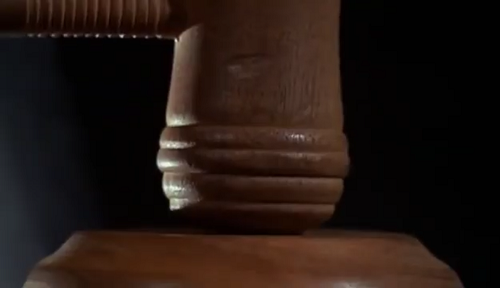 A gavel strikes. 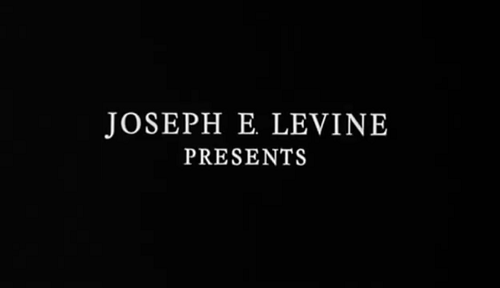 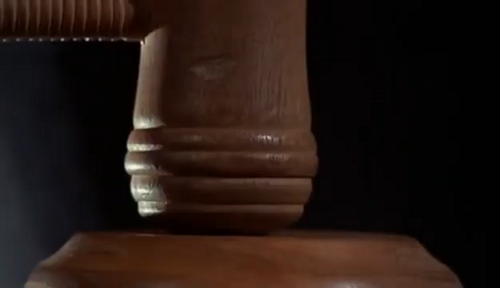 A gavel strikes. 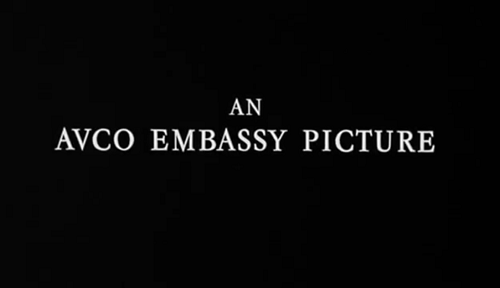 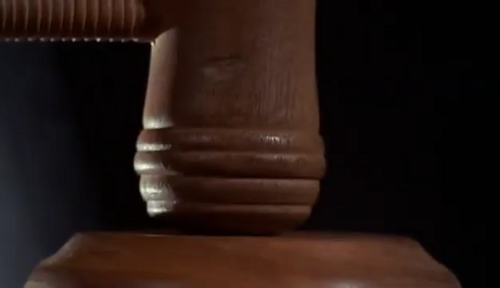 A gavel strikes. 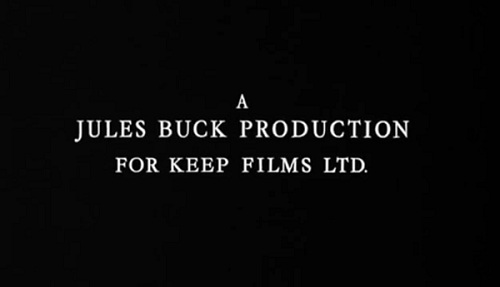 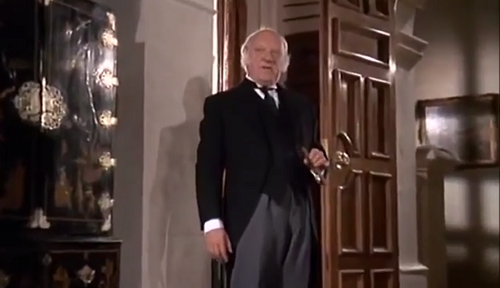 TUCKER (announcing): Ladies and gentlemen, the Queen’s right trustee and well-beloved cousin, Jack Arnold Alexander Tancred Gurney, the Fourteenth Earl of Gurney. 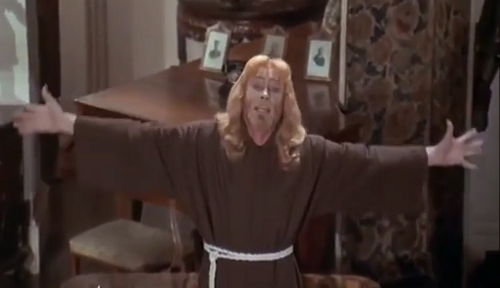 JACK (dressed as Christ): I am the Absolute Righteous Eternal, the Lord of Hosts, the King of Kings, Lord of Lords, the Father, Son, and Holy Ghost, the One True God, the God of Love, the Christ! 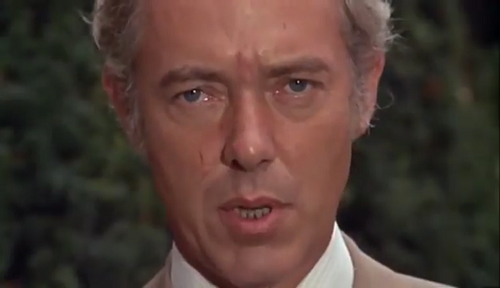 DR. HERDER: His Lordship is a paranoid schizophrenic. 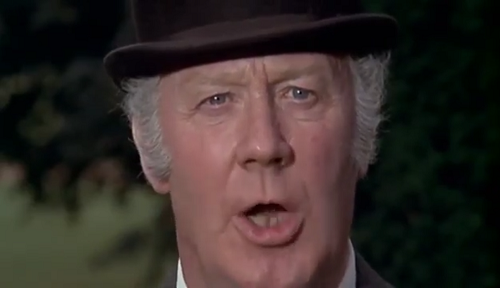 CHARLES: But he’s a Gurney! 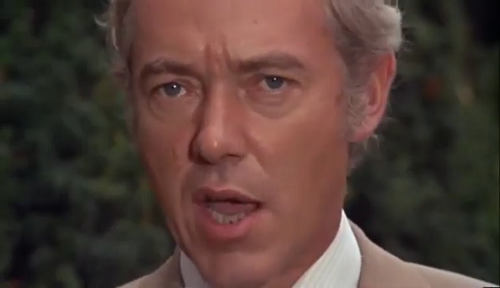 DR. HERDER: Then he’s a paranoid schizophrenic Gurney. 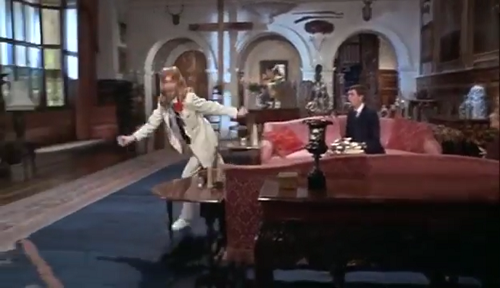 JACK: Here is the rag, see how it goes, up on your heels, down on your toes. 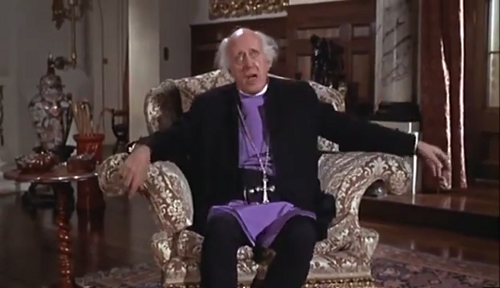 BISHOP (terribly flustered): But where was he, where was he, why was he, why was he? 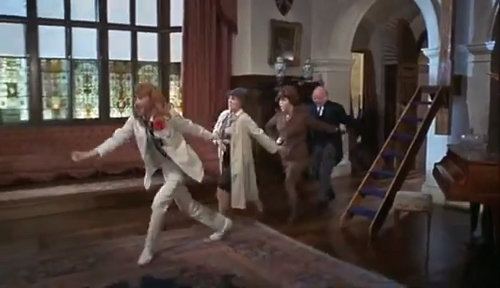 JACK: That’s the way to do the Varsity... 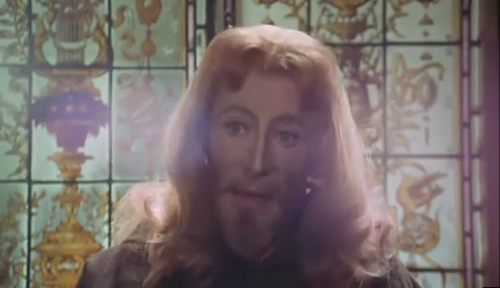 JACK: Hroom! What I’m trying to say is that “if the words I say sound queer or funny to your ear, a little jumbled-up and jivey, sing mares eat oats and does eat oats and little lambs eat ivy,” Ivy, Ivy, who’s Ivy? 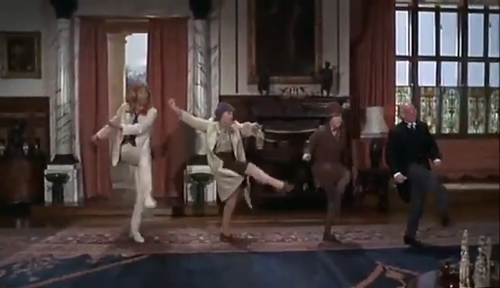 JACK: Everybody’s doin’ the Varsity... 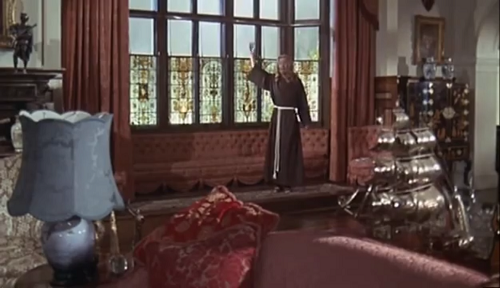 JACK: Is everybody happy? 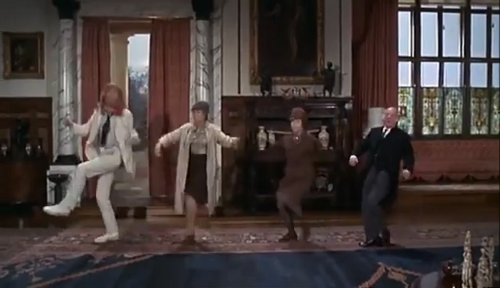 JACK: That’s the way to do the Varsity Drag! 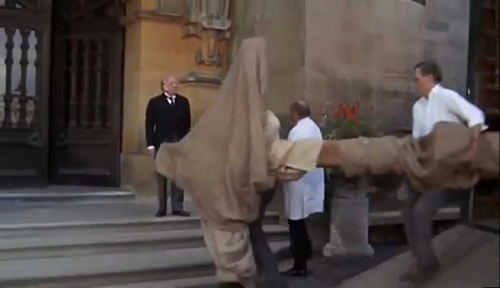 TUCKER: What’s all this then? FOREMAN: It’s His Lordship’s effects. 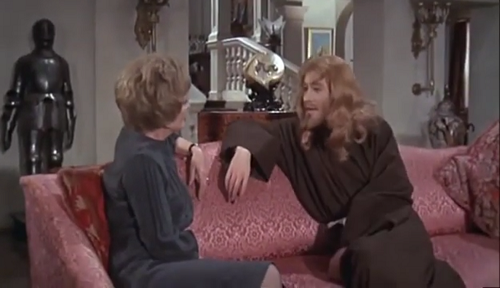 CLAIRE: How do you know you’re God? JACK: It’s simple. When I pray to Him, I find I’m talking to myself. 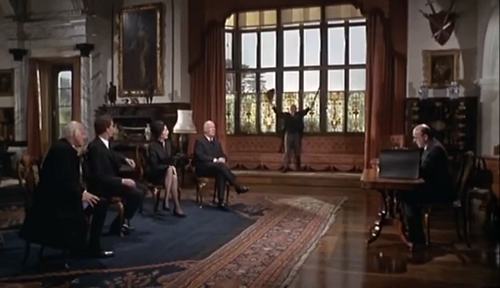 TUCKER: Thirty thousand smackers! Yippeeeeee! 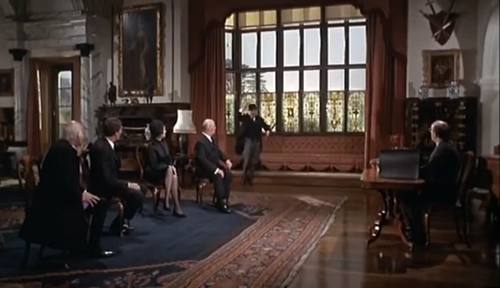 TUCKER: “I’m Gilbert the Filbert, the Knut with a K.”... 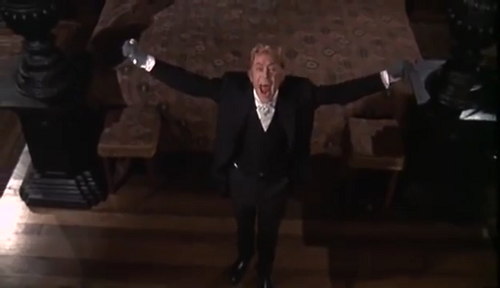 JACK (as himself, screaming, as camera cranes up): Aaaaaaaaaaaaaa!!!!!!!! 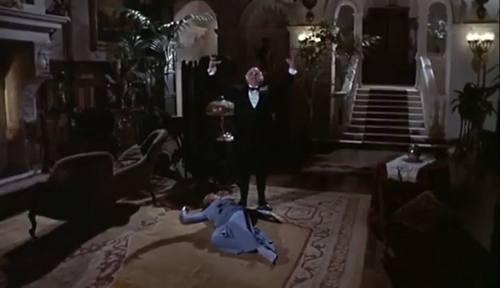 TUCKER: One less! Praise the Lord! 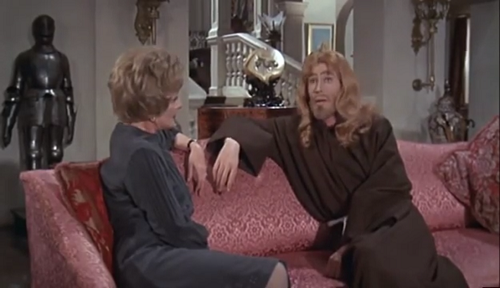 JACK: But the voices of Saint Francis, Socrates, General Gordon, and Timothy Leary all told me I was God. 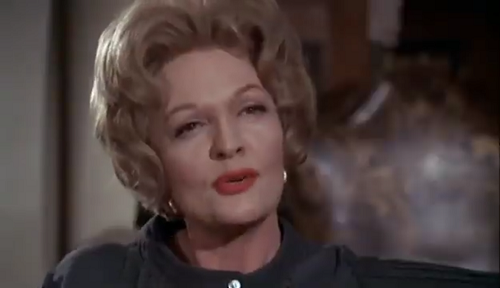 CLAIRE: Where did all this happen? 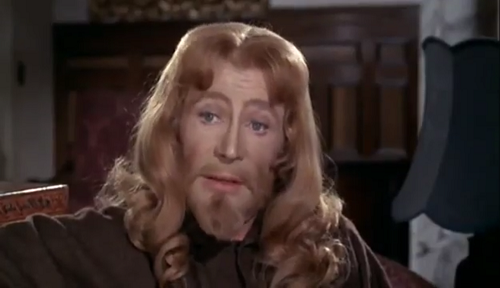 JACK: East Acton, outside the public urinal. Then there’s a gap in my memory, but I think, I think it included this line: 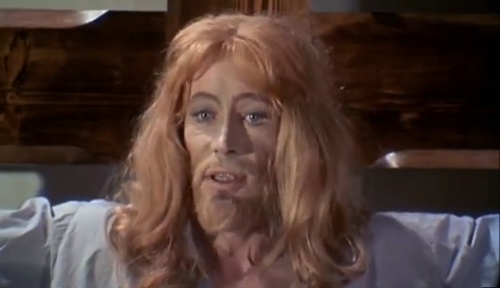 JACK (on the cross): Bless the crawfish with its scuttling walk. Bless the trout, pilchard, and periwinkle. Bless Ted Smoothey of 22 East Hackney Road. And I also think I remember a moment of “My Blue Heaven”: 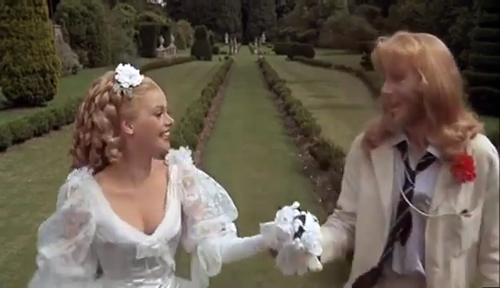 I certainly recall that it ended with the cobweb-covered skeletons singing “Dem bones, dem bones, dem dry bones.” 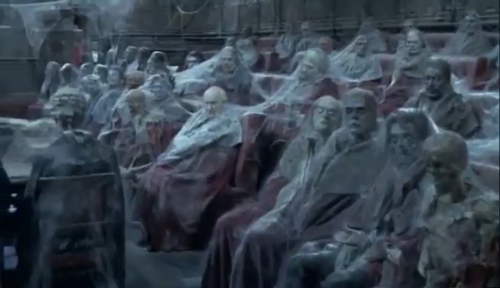 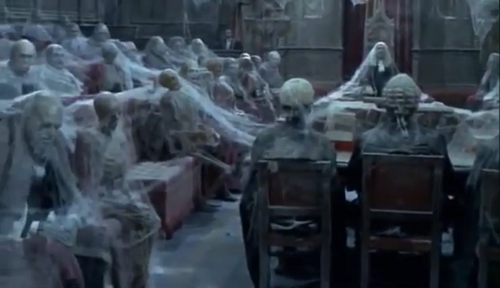 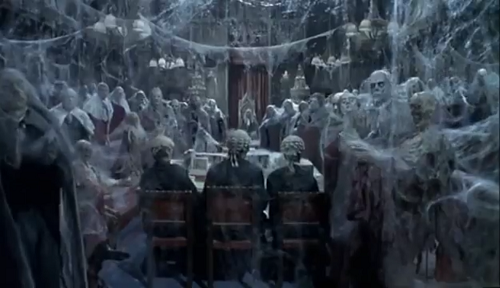 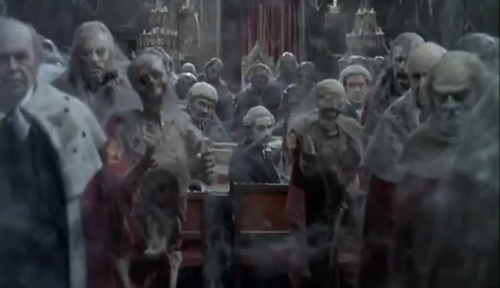 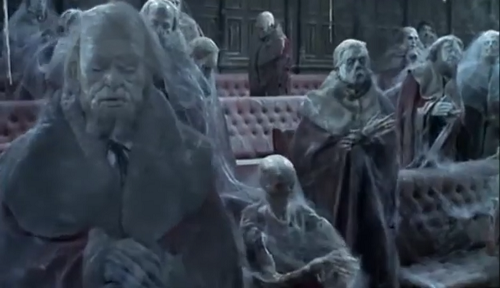 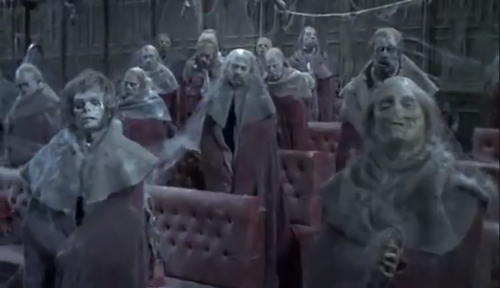 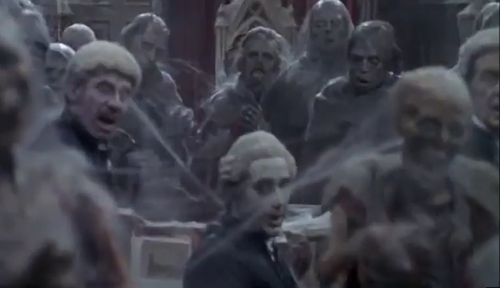 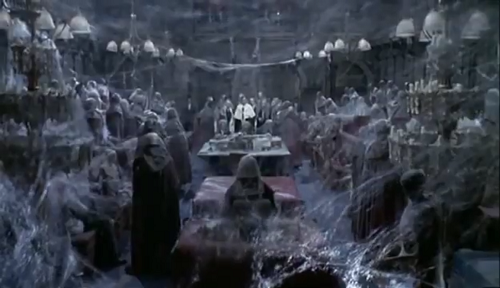 THE RULING CLASS and the main credits were superimposed on the above shot. 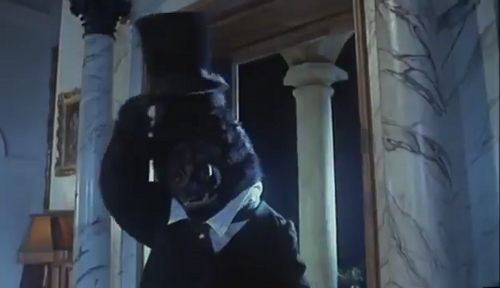 As the skeletons come to a finish, a gorilla tips his top hat to the camera. |
It was brilliant. I just had to see this movie, which I was sure was one of the funniest movies ever made.
Now, at long last, I had my chance.
Zo, I came in and the movie was there, six reels, 123 minutes, not eight reels.
I watched it in something resembling shock, because, though it was comical, it had only a few a laughs.
Actually, it was mortifying and not at all easy to watch.
It was a vicious attack on the entirety of the British aristocracy, overbrimming with righteous anger.
The sanest character in it was Jack during the time he was convinced he was Christ.
The other characters, with but a single exception, were utterly repugnant, useless wastes of space who contribute nothing to the world.
Grace, who begins as a brazen and detestable con artist, is the only one who develops a trace of heart.
That brilliantly deceptive preview had brilliantly restitched the scenes to create an uproarious comedy,
and yet the film itself more closely resembled a horror story.
Zo, if you can locate that wonderful preview anywhere, please let me know.
I definitely want a copy!
The preview included on the
Criterion DVD is entirely different and not at all fun.
The Criterion DVD, by the way, contains the complete movie, but minus the intermission,
and with the sound about a third of a second ahead of the image, an inexcusable error.
It was not taken from a master, and so I assume that the masters have vanished.
It was copied from the director’s personal 35mm print, which had been beaten up a bit.
It includes the lab rats, the striptease, and the tricycle, which were all missing from the print I ran.
It also includes some other sequences that I did not remember (the wedding banquet, for instance),
which may or may not have been included when I ran it.
For those who complain about video releases that are 4×3, THAT’S OKAY!!!!
It was composed for a 1:1.75 crop, but it was shot at Academy 1:1.375.
There’s plenty of extra height on the frame.
You’re not missing any width on the full-screen videos.
(Never hurt the rats.
Please.
The war against the rats is one we can only lose.
We need to live in balance with and in harmony with the rats, and that is an art that we, as a species, have lost.
We need to regain it.)
Something else made me curious.
There were two posters that I knew about.
One showed Peter O’Toole jumping off a cross.
The other showed him riding a tricycle.
There was no tricycle in the version that I ran.
I assumed it must have been from a deleted scene, as, indeed, it turned out to be.
As I wander back through the old online issues of the
Albuquerque Journal, I make a discovery,
and I had no memory of this at all.
These were the showtimes:
02:15 What’s New, Pussycat?
04:15 The Ruling Class
07:00 What’s New, Pussycat?
09:00 The Ruling Class
12:00 The Rocky Horror Picture Show
04:15 The Ruling Class
07:00 What’s New, Pussycat?
09:00 The Ruling Class
12:00 The Rocky Horror Picture Show
Surprising!
The scheduler(s?) assumed a running time of 154 minutes!
Apparently, the distributor supplied that longer running time.
Yet that is not what showed up.
Had it ever shown up?
Just learned about
the initial British broadcast of The Ruling Class.
Producer Jules Buck offered broadcast rights for sale, and the BBC purchased those rights for three transmissions beginning on Saturday, 25 May 1974.
In retribution, “Rank, EMI, Classic, Star, Granada, and Caledonia-Associated,”
all members of the Cinematograph Exhibitors Association,
and each “controlling more than 30 cinemas,”
blackballed Jules Buck, saying he had violated the rule about not issuing a film to television until five years after its cinema première.
Little did it matter that there was no such rule,
little did it matter that the BBC had broadcast other new films without incident,
little did it matter that Jules Buck was not a party to the Cinematograph Exhibitors Association;
he was blackballed anyway.
Mainstream British cinemas would no longer book his films.
I’m sure that taught him a lesson.
He soon retired.
Showbiz. What is it I say about showbiz?
Text: Copyright © 2019–2021, Ranjit Sandhu.
Images: Various copyrights, but reproduction here should qualify as fair use.
If you own any of these images, please contact me.
Images: Various copyrights, but reproduction here should qualify as fair use.
If you own any of these images, please contact me.
